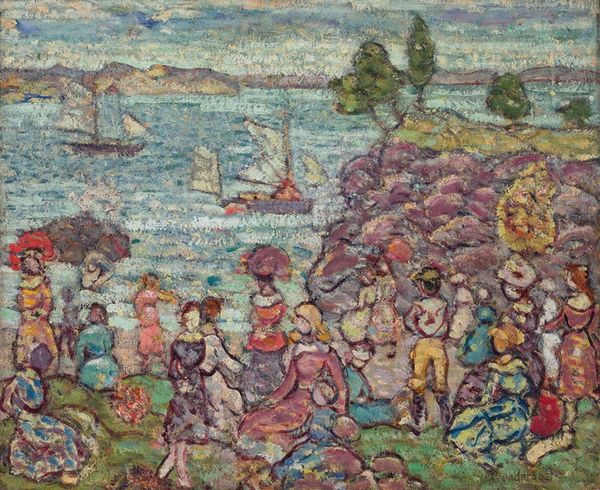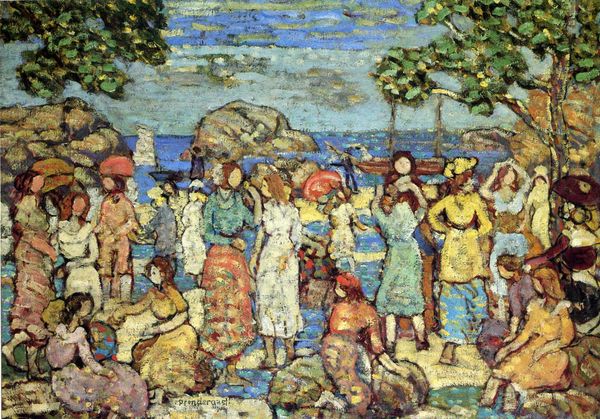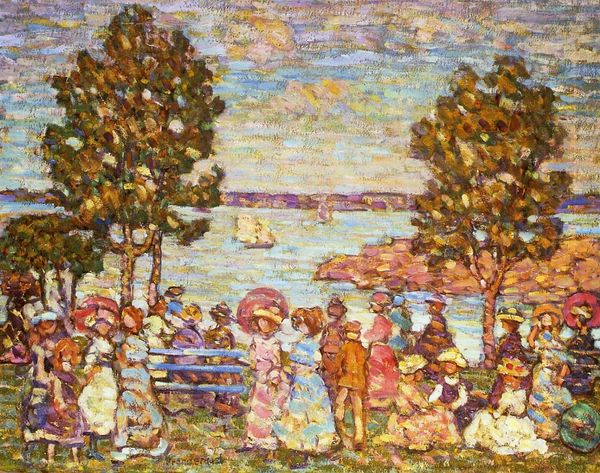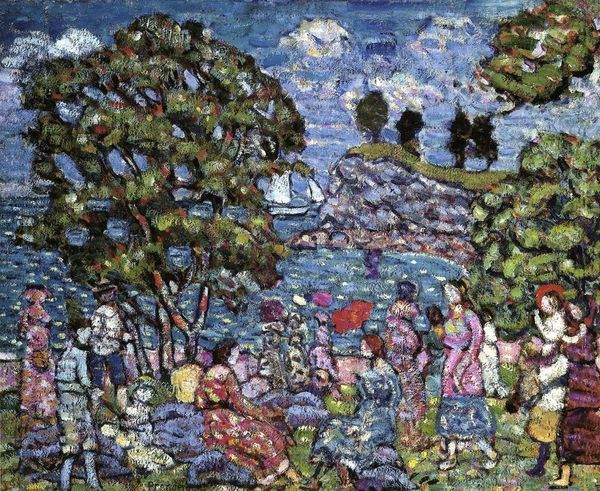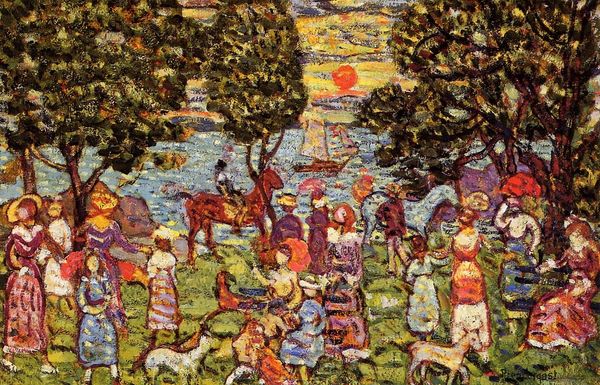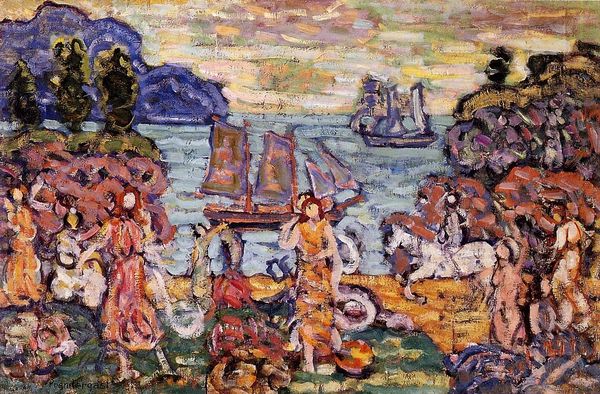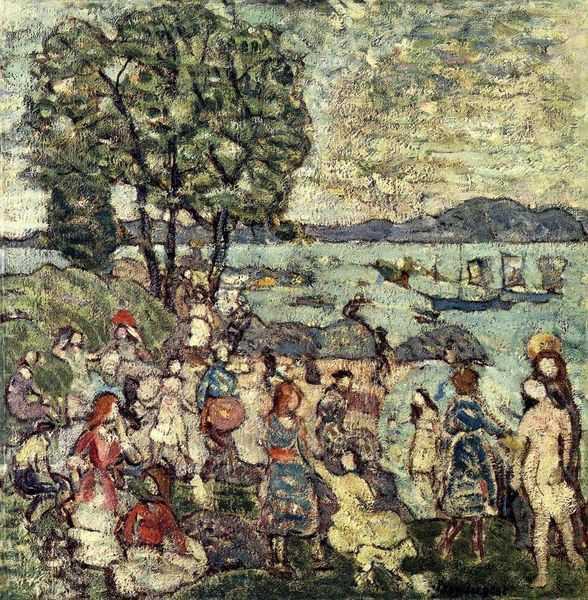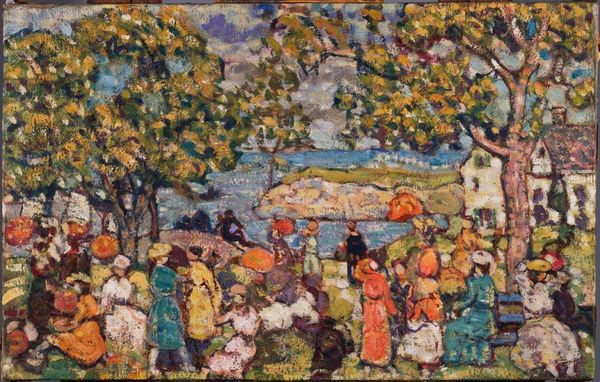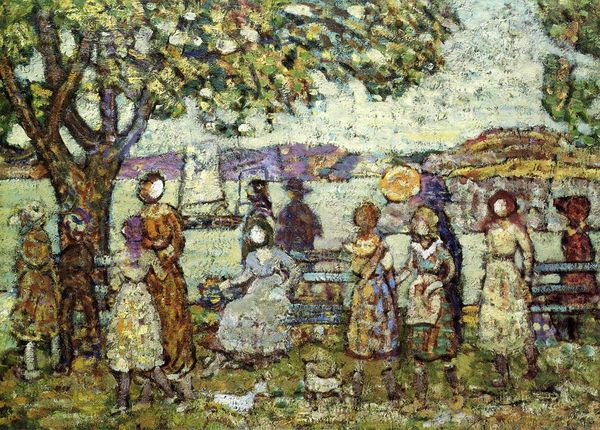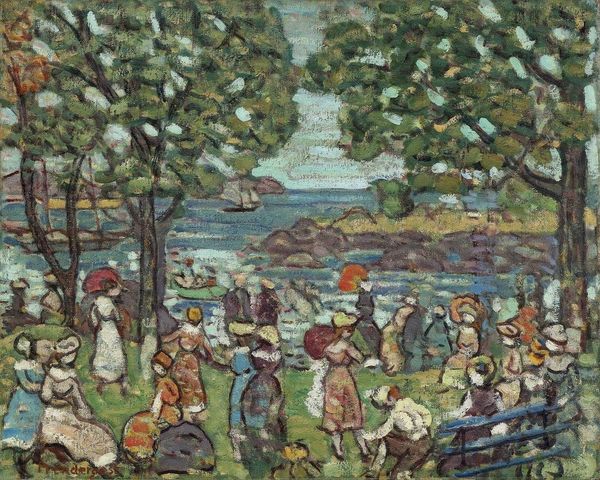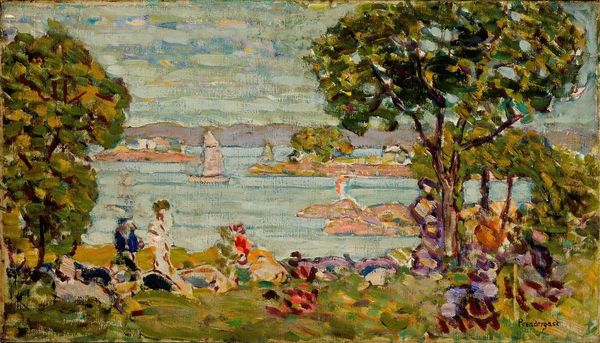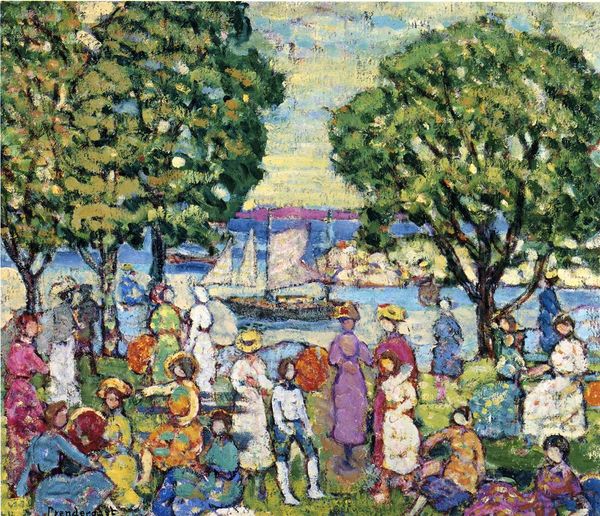
Dimensions: 51.4 x 71.1 cm
Copyright: Public domain
Curator: It's called "Late Afternoon, New England" by Maurice Prendergast, created around 1918. He employs watercolor, and I believe also some impasto to build a subtly textured surface, focusing on figuration and landscape, the impressionist movement. Editor: Well, it's charmingly busy! Almost dreamlike in its soft focus, like a memory trying to solidify. It feels celebratory, though the figures are somewhat… indistinct. I wonder, who are these people? Are they intended to be individuals or archetypes of leisure? Curator: Prendergast often worked "en plein air," so perhaps these are simply scenes observed. Notice how the dabs of color coalesce to suggest clothing, parasols, a bustling group—elements carrying echoes of societal values from that time, like the emergence of the 'new woman.' The parasols indicate a kind of class, doesn’t it? A protective stance that isn't merely functional. Editor: Absolutely. They’re visually fascinating; floating pops of color creating both protection and demarcation within this society. Their presence brings forward a reading of this "late afternoon" as one also structured around class, leisure, gender performance. Look at those groupings, mirroring the ships upon the water, setting a clear social frame that, to me, speaks volumes about permitted movement within societal boundaries during the time. Curator: It could suggest that societal boundary in many ways… Prendergast loved rendering bustling seaside or park scenes; for him, they seem almost timeless symbols of gathering and playfulness, a reflection of idealized societal interactions, in some ways untouched by the trauma of the World War. What appears at first viewing celebratory is deeply laced with codes around belonging and permitted existence, especially for women. Editor: That rings so true. By understanding how societal expectations confined and directed these individuals, Prendergast opens up the discussion about freedom and containment. Curator: It makes one ponder if it's documenting, or creating and presenting in a dream-like haze...a possible visual memory in post-war America, a space of collective social performances, presented via a unique pattern? Editor: It encourages reflection. I'll certainly keep that in mind, considering the complexities embedded within the beauty of it all.
Comments
No comments
Be the first to comment and join the conversation on the ultimate creative platform.

